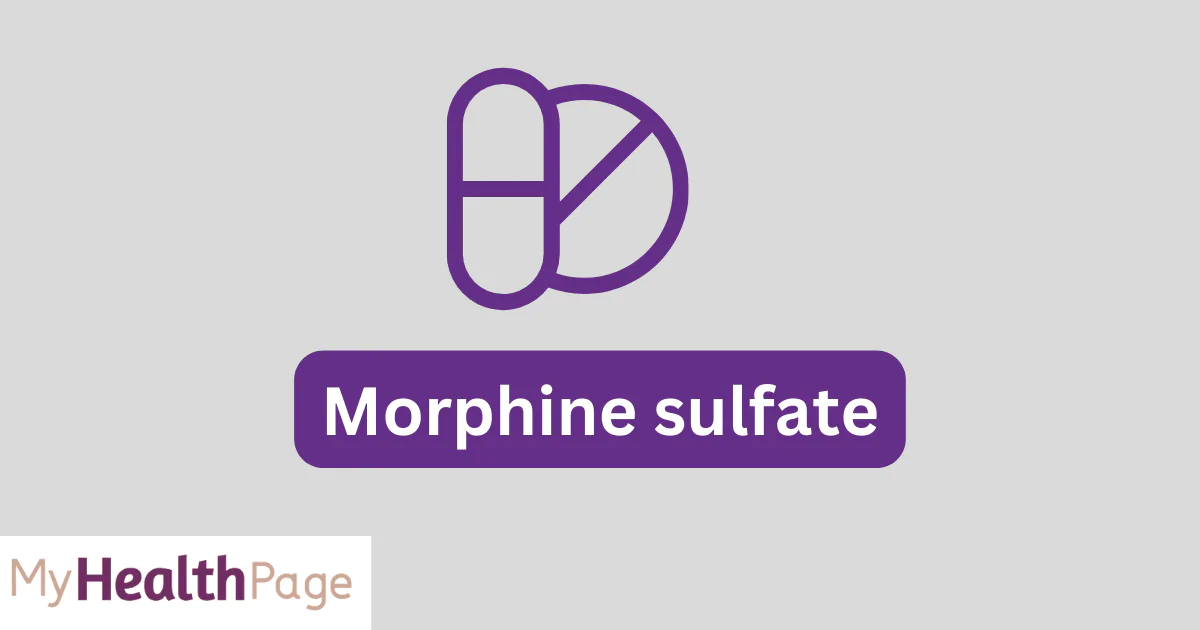Morphine sulfate is a potent opioid analgesic drug used to relieve severe pain. It works by acting on the central nervous system (CNS) to reduce the feeling of pain and the emotional response to pain. Here’s a detailed overview of its key aspects:
Pharmacodynamics
Morphine sulfate acts primarily on mu-opioid receptors, which are distributed throughout the central nervous system, including the brain and spinal cord. By binding to these receptors, morphine mimics the action of endogenous opioids (endorphins), leading to analgesia (pain relief), sedation, euphoria, and a decreased perception of discomfort. It can also cause respiratory depression, miosis (constriction of the pupils), and reduced gastrointestinal motility.
Pharmacokinetics
- Absorption: Morphine can be administered via several routes, including oral, intravenous (IV), intramuscular (IM), subcutaneous (SC), and epidural. The bioavailability and onset of action vary depending on the route of administration.
- Distribution: It is widely distributed in the body, crossing the blood-brain barrier to exert its effects on the CNS. It also binds to plasma proteins to a certain extent.
- Metabolism: Morphine is primarily metabolized in the liver to morphine-3-glucuronide (M3G) and morphine-6-glucuronide (M6G), among other metabolites. M6G has analgesic properties, contributing to the overall effect of morphine.
- Excretion: Morphine and its metabolites are mainly excreted via the kidneys. The elimination half-life varies but is generally around 2 to 4 hours, which can be prolonged in renal impairment.
Indications
Morphine sulfate is indicated for the management of acute and chronic severe pain where the use of an opioid analgesic is appropriate. It is often used in postoperative pain, cancer pain, and in palliative care settings.
Contraindications
- Known hypersensitivity to morphine or other opioids
- Respiratory depression in the absence of resuscitative equipment
- Acute or severe bronchial asthma or hypercarbia
- Paralytic ileus or acute abdomen
Side Effects
Common side effects include nausea, vomiting, constipation, drowsiness, confusion, and respiratory depression. It can also lead to tolerance, physical dependence, and, with prolonged use, addiction.
Special Considerations
- Dosing: Must be carefully titrated to the patient’s pain level and response, taking into account opioid tolerance, if present.
- Monitoring: Patients on morphine should be closely monitored for signs of respiratory depression, especially when initiating therapy or increasing the dose.
- Withdrawal: Abrupt discontinuation after prolonged use can lead to withdrawal symptoms. It is recommended to taper the dose gradually.
Use in Special Populations
- Elderly: May be more sensitive to the effects, requiring lower initial doses.
- Renal and Hepatic Impairment: May require dose adjustments due to altered pharmacokinetics.
Drug Interactions
Morphine sulfate can interact with other CNS depressants (e.g., alcohol, benzodiazepines) to increase CNS depression, with anticholinergic drugs to increase the risk of constipation and urinary retention, and with monoamine oxidase inhibitors (MAOIs) potentially leading to severe reactions.
Read more : Methotrexate: Essential Medication Guide for Patients
Disclaimer : The information provided on myhealthpage.in is not a substitute for professional medical advice, diagnosis, or treatment. If you have any questions or concerns about your health, please consult with a licensed physician or other qualified healthcare provider.




















